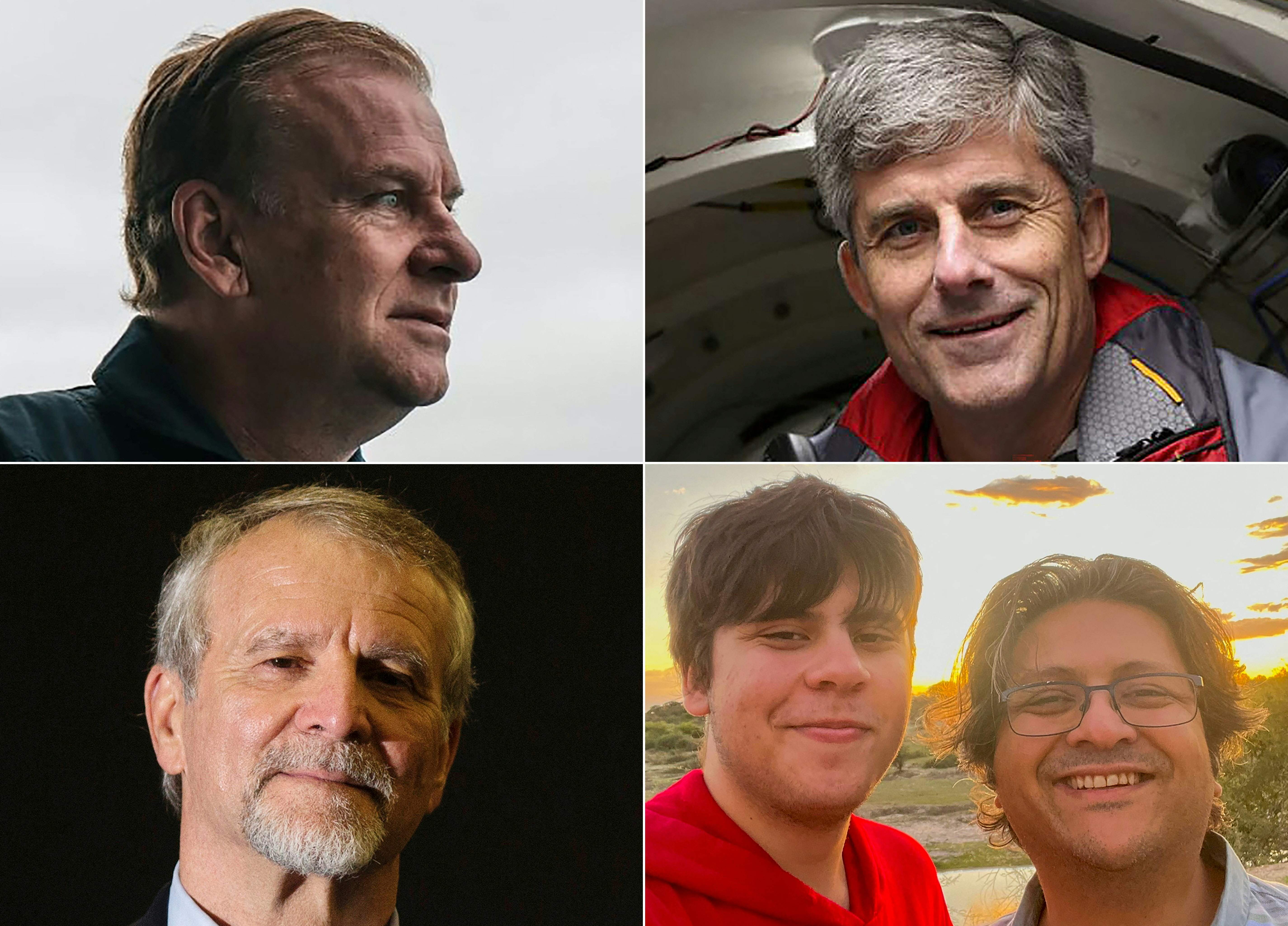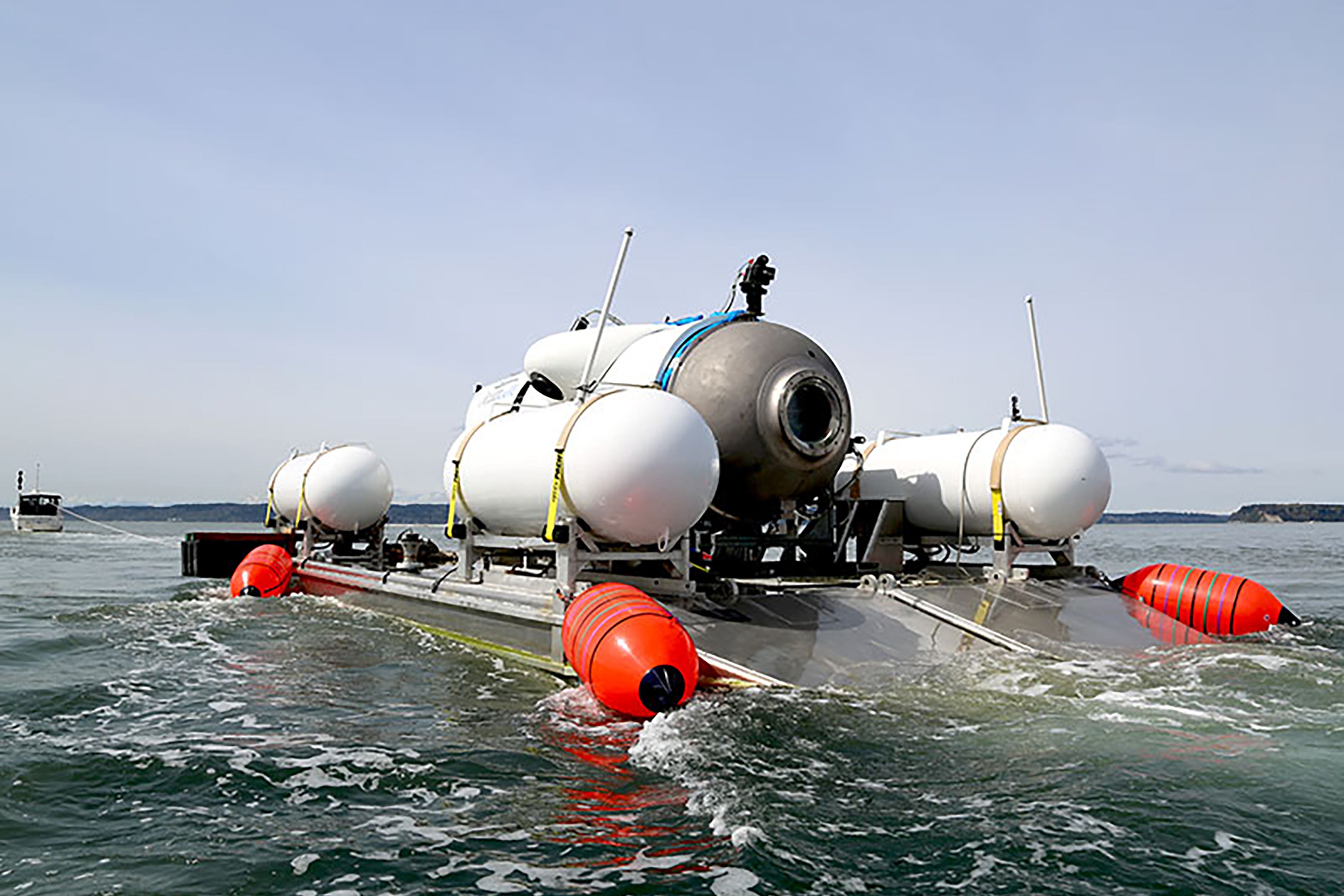Frantic final search for stricken Titanic submarine as oxygen levels dwindle
US Coast Guard admits rescuers do not know source of mysterious ‘banging’ sounds
The frantic last-ditch search for the stricken Titanic tourist submarine has ramped up, with more ships joining the rescue effort as oxygen levels on board dwindled.
It is hoped that the additional personnel will be enough to save the five crew members on the OceanGate Expeditions sub before oxygen runs out at around 10am UK time on Thursday.
Mysterious “banging” noises beneath the surface had offered hope after being detected on Tuesday and then again on Wednesday, but the US Coast Guard has now admitted searchers “don't know what they are”.
The expanded search zone has grown “exponentially” and now covers an area twice the size of the US state of Connecticut – an area bigger than Wales – and 2.5 miles deep.
Five additional vessels heading for the area are not expected to arrive for the next 24 to 48 hours, with some set to arrive after the grim oxygen deadline.
This emerged after the Coast Guard rejected an offer of help from a UK firm, which experts say could provide the “best hope” of finding the missing submarine, because it said its deep-sea submersible craft was too far away.
Magellan Limited has had a vessel “ready to support” the rescue mission since early on Monday and the craft – which has previously visited the Titanic wreckage site – is currently sat on a plane awaiting clearance to be deployed.
The Explorers Club, a community of experienced explorers of which two Titan crew members are part of, has issued a desperate plea to the US government to deploy the ROV to the site, saying it offers “possibly the best hope for a rescue”.
Meanwhile, anguished families of the missing crew members continued praying for a miracle. Sabrina Dawood – whose brother, British businessman Shahzada Dawood, is on the Titan with 19-year-old son Suleman – said the family’s “sole focus” is their rescue.
Speaking at a press conference on Wednesday, Captain Jamie Frederick offered hope as he insisted it was “100 per cent a rescue mission” rather than a “recovery”. But he admitted the mission was of “enormous complexity” because it is so far offshore in the Atlantic Ocean.
“We have to remain optimistic and hopeful when we are in a search and rescue case,” he said.
“We are in the middle of the search and rescue case. Sometimes we don’t find what we’re looking for and you have to carefully consider all of the factors.”

The “banging” sound was initially detected by a Canadian P-3 aircraft on Tuesday and has been shared with US Navy experts for further analysis, Captain Frederick explained, adding that noises were heard on Wednesday as well.
The discovery has prompted the deployment of remotely operated vehicles (ROV) to examine the area more closely.
“Although the ROV searches have yielded negative results they continue,” he added.
“With respect to the noises specifically, we don’t know what they are, to be frank with you, they’re P3 detected noises, that’s why they’re up there, that’s why they’re doing what they’re doing, that’s why they put sonar buoys in the water.”

He explained that rescuers are searching in the area where the banging was heard and when additional ROVs arrive on Thursday morning they will “continue to search in those areas where the noises were detected”.
Carl Hartsfield, from the Woods Hole Oceanographic Institution, said it was “very difficult to discern” human noises from other sounds.
“But I can tell you that this team has multiple sensors that are in the area,” he added.
“They’re sending data back expeditiously to the best people in the world to analyse that data and they’re feeding the results of the analysis back to the unified team and they’re making decisions.”
Captain Frederick refused to be drawn on how much oxygen was likely left and revealed there was some food on board the sub, but did not know how much. The Coast Guard has previously estimated air would run out at around 10am on Thursday UK time.
Titan lost contact with its mothership – the Polar Prince – about an hour and 45 minutes after it began diving down to see the Titanic wreckage, which sits on seabed 12,500ft (3,800m) below sea level.
The five-strong crew onboard the £200,000-a-seat excursion includes CEO and founder of OceanGate Expeditions, Stockton Rush, British billionaire explorer Hamish Harding, renowned French diver Paul-Henri Nargeolet and UK-based Pakistani businessman Mr Dawood and his son Suleman.
Despite the vessel’s disappearance, a spokesman for the firm which operates the boat which launched Titan insisted it runs an “extremely safe operation”.
Sean Leet, co-founder and chairman of Horizon Maritime Services, which owns the Polar Prince, said its “emergency procedures kicked in immediately” when the alarm was raised.
Ships heading to the area include French research vessel, the Atalante, which can reach the depths of the Titanic’s shipwreck and His Majesty’s Canadian Ship Glace Bay, which can perform search and rescue duties.
They will join the Polar Prince as well as Deep Energy, a pipe-laying vessel flagged in the Bahamas, and three other Canadian vessels.
“It’s a good combination,” Matthew Heaslip, a senior lecturer in naval history at the University of Portsmouth, told The New York Times. “A mix of vessels that would be very much intended for this kind of rescue.”

As the search continues, revelations continued to emerge about OceanGate founder Mr Rush, who was found to have previously complained about “obscenely safe” regulations holding his industry back.
Speaking in 2019 to the Smithsonian Magazine, Mr Rush said government regulations had curbed innovation and growth in the US commercial submarine industry.
“There hasn’t been an injury in the commercial sub industry in over 35 years. It’s obscenely safe because they have all these regulations,” Mr Rush, then 57, said. “But it also hasn’t innovated or grown – because they have all these regulations.”
Join our commenting forum
Join thought-provoking conversations, follow other Independent readers and see their replies
Comments




Bookmark popover
Removed from bookmarks